Travel Indochina's very first tour left Ho Chi Minh City on 29 August 1993, 20 years ago this week. I was at the helm as tour leader. I fumbled my way through the first two tours before more capable tour leading hands stepped in and put Travel Indochina's future on a sound footing.
An old school friend, Paul Hole, and I, decided to start Travel Indochina in early 1993. We ran a trial tour with a group of friends in March that year (footage from the trial tour is featured in the video below).
I'd been visiting Vietnam on business since 1990 as a wide-eyed mid-twenties Australian and was totally captivated by the place. Starting a travel company seemed to be an excellent way to channel an interest in getting to know Vietnam and to witness the process of great change that was just getting under way.
Anybody that visited Vietnam in those days could see that the country had a bright future as a travel destination.
Vietnam was tentatively opening up its economy after a disatrous experience of hardline communism following the end of the Vietnam War in 1975. It was the beginning of a period of economic and social transformation that has continued to this day.
In the months prior to our first tour, Paul and I lugged heavy carousel slide projectors around Australia telling travel agents, a small interested segment of the general public and anyone else within earshot, what a wonderful travel destination Vietnam was. Everyone was surprised by images of mountains and beaches and rundown colonial architecture.
But it was the beaming, welcoming, faces that resonated most with viewers of our Vietnam slide show. "How could a people who have suffered so much be so friendly?" we were asked constantly.
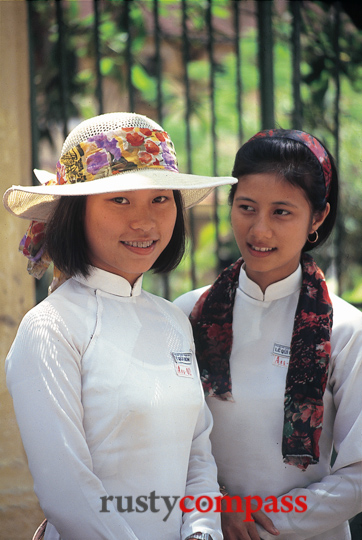
Photo: Mark BowyerThese two girls, typical Saigonese in ao dais, were in our first travel brochure in 93.
And there was Vietnam's magic encapsulated. My personal journey began.
Vietnam was a tough sell back in 1993. Its international profile was only a little better than North Korea's. It was remembered mainly for a long and awful war. In the late 70s and 80s, it reached the news pages again as hundreds of thousands took to small fishing boats to try their luck at a new life away from post-war poverty and oppression. An unknown number perished.
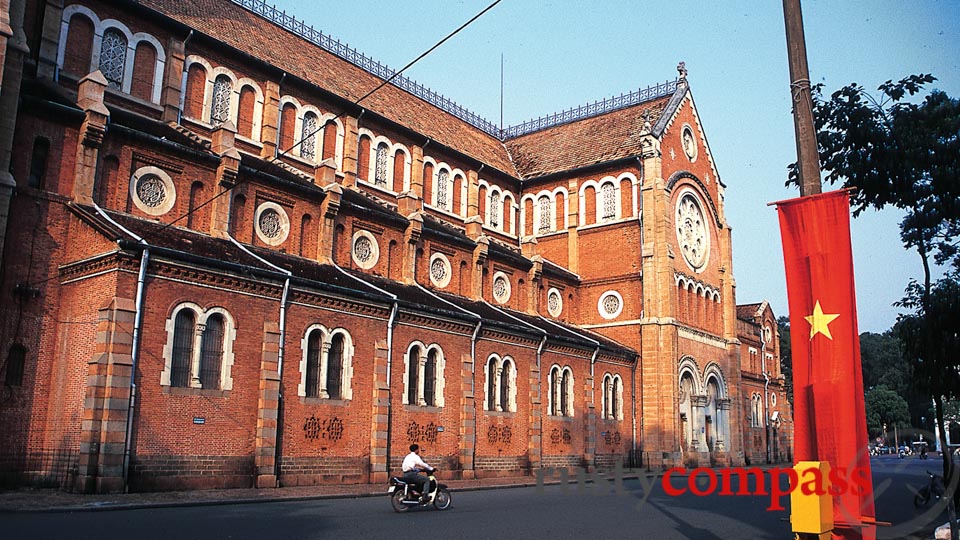
Photo: Mark BowyerQuieter Saigon Streets of the 90s.
Major post-1975 battles with Cambodia and China had been largely forgotten.
While knowledge of Vietnam was limited, there was plenty of curiosity and plenty of post-war sympathy too. Many were also admiring of the country's determined defeat of two superpowers - the colonial French and then the United States. This mix of sentimentality combined with the warm reception that visitors to the country received, all helped build a "cool" buzz around Vietnam by the late-90s.
The first Travel Indochina tour (the Travel Indochina name wasn't adopted till 1994) was a 17 day small group overland trip from Saigon to Hanoi called The New Vietnam. And The New Vietnam kept on being new. A similar tour operated under the same name for the next 15 plus years.
20 years later, it's still common to hear travellers patting themselves on the back for visiting Vietnam while it's still "new",
The first Travel Indochina travellers were a fantastic bunch and they were typical of the kinds of the people we encountered over the following years. There were city professionals, country people, tradesmen and housewives and they ranged in age from mid twenties to late 60s. They were friendly, very accepting of where Vietnam was at in 1993, and they had a great interest in getting to know the country, its history, its food and its people.
We stayed at the historic Majestic Hotel. In 1993 it was very rundown but that was all part of the appeal. The closest thing to a 5 star hotel was the Saigon Floating Hotel, a barge with hotel rooms that had been relocated from Australia's Great Barrier Reef. Known as "the floater", it was moored on the Saigon River and accommodated the business people, a good many of them of dubious character, rushing to sign a deal and get a piece of a much-hyped new market.
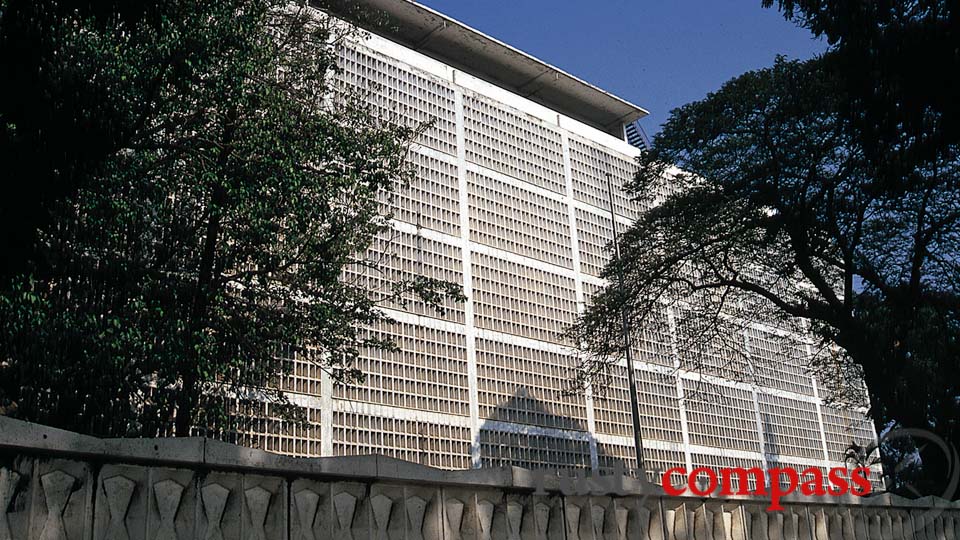
Photo: Mark BowyerThe former US Embassy was demolished in 1998.
A crippling US trade embargo continued to hamper efforts to develop the economy. Per capita GDP was hovering above 200USD (less than $20 per month) - it's now close on 1500USD.
There were no mobile phones, ATMs or internet. 5000 Vietnam Dong was the largest note of currency in circulation (it's now 500,000VND).
Vietnam Airlines operated a mostly Russian fleet and had an appalling safety record. The most memorable feature of any flight was the long sweaty wait for the air-conditioning to be activated and the thick cloud of vapour that would fill the aircraft once it was. The routine broken Tupolov seats, passengers in the aisles, and occasional livestock in carry-on baggage barely raised an eyebrow.
The international terminal at Saigon airport was unforgettable. Dramatic outpourings of emotion accompanied every aircraft arrival as families, long divided, were reunited. The howls were a vivid reminder that for the Vietnamese people, decades of suffering hadn't ended with the end of the war.
In those days, the economic gap between the returning "viet kieu" (overseas Vietnamese) and the family members that had been left behind, was gaping. It was visible in the clothes, the jewellery and the haircuts, but even more strikingly, the viet kieu were noticeably larger than the undernourished countrymen and women they'd left behind.
In 1993, the Vietnamese were thin, very thin. Men tended to wear baggy pants and oversized long sleeve shirts. Together, they lent bony frames some longed-for bulk. Ill-fitting jeans that ran way too far up the back were commonly worn by young women in sharp contrast to the less fabric-intensive pants that pass for fashion on Saigon's streets today.
The Q Bar and Saigon Headlines, both in the Opera House, The Downunder Bar at the Saigon Floating Hotel, and a tiny, grungy hole in the wall on Dong Du St named Apocalypse Now, were the only places you could get a late night drink.
A girly bar, also on Dong Du St, cheekily named the B475 Bar had recently been shutdown.
The tallest building in Saigon was the early 1970s Palace Hotel - from which you could still see the former US Embassy that had become the offices of a state oil company. It was like an awesome, ugly, neglected tomb remembering a former power.
1993 was the year that Vietnam abolished travel permits that had previously tightly controlled all movement by foreigners in the country. Independent travel was finally possible.
Welcome drinks on the first tour were had at the superbly kitsch Rex Hotel rooftop bar before dinner at Maxim's next to the Majestic. Not much had changed at either venue in decades. The Rex rooftop still had all the quirky character that evoked its days as a haunt for spooks and military brass - including liberal use of fairy lights and a collection of perfectly groomed bonsai animals. At Maxim's we were entertained by an orchestra that performed each night - an unthinkable extravagance now.
Walking in Saigon was a much more straightforward proposition in 1993. The population was perhaps half what it is today. Roads were far less congested, footpaths weren't crammed with motorbikes and the locals were more laid-back about getting around.
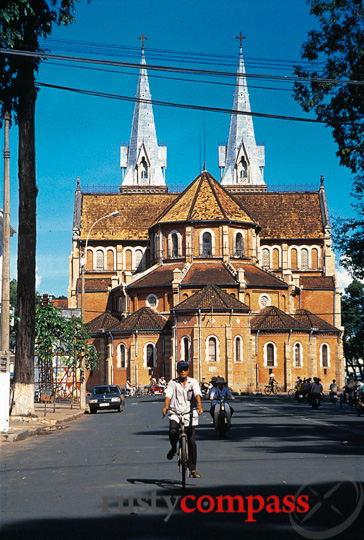
Photo: Mark BowyerPham Ngoc Thach St circa 1990. Very mellow.
It seemed a more polite, less rushed, time. But it was also a much poorer time.
Bicycles and motorbikes, mainly Honda Cubs, were the order of
the day. There were very few cars.
Cyclos were still a very common form of transport for locals and visitors. These days, banned from many streets, they're mainly a novelty for travellers.
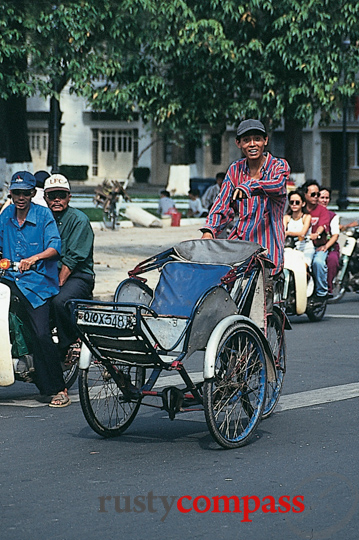
Photo: Mark BowyerCyclos were everywhere in the 90s.
Cyclo drivers, a good many of whom were former South Vietnamese (ARVN) soldiers, were some of the best English language speakers in Vietnam. Cyclo driving was usually as far up the ladder you could get if you had sided with the losers in Vietnam's 30 year war.
The traffic lights hadn't changed since the Americans left and many were pointing the wrong way down one way streets. It didn't matter. They were ignored by all.
Each day, Saigon would grind to a halt at 11.30am for lunch and siesta. The streets were deserted until the return to work at 1.30pm. The siesta still survives in some quarters including some state offices, but has mostly disappeared along with the 2 hour lunch break.
The Saigon city tour in 93 didn't look all that different to today's version - though many names have changed. We left the Majestic Hotel on foot, past wartime icons the Caravelle (unrenovated in 93) and the Continental, towards the Peoples Committee Building, the Notre Dame Cathedral, the former US Embassy (it was torn down in 1998 to make way for the new US Consulate), the Reunification Palace and the Museum of the Revolution (now the Ho Chi Minh City Museum). We also visited the then US War Crimes Museum (now the more diplomatically named War Remnants Museum). Cholon and Cu Chi were also on the itinerary.
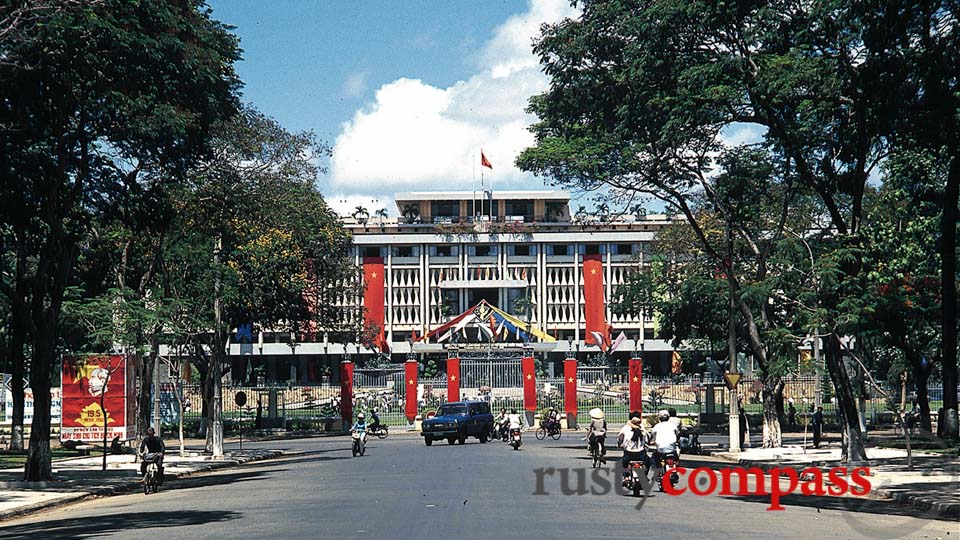
Photo: Mark BowyerLe Duan St.
The museums were even more heavy handed in their propaganda pitch than they are today. But everyone felt that it was Vietnam's turn to tell its tale. And travellers mostly enjoyed hearing Vietnam's side of the story.
On night two, we dined at Madam Dai's Bibliotheque at 84A Nguyen Du St. Madam Phuoc Dai, a French trained lawyer, had been an opposition politician in the South Vietnamese parliament and had somehow managed to negotiate the fraught transition to the post-1975 communist period.
Hers was one of the few restaurants open in Saigon at that time. Nobody seemed to go there expecting great food but anyone visiting Saigon in the 80s and early 90s had dinner at Madam Dai's. The library was stacked with books in English and French. There was a copy of A Bright Shining Lie inscribed by its author, former New York Times Correspondent Neil Sheehan and another note signed by Australian cameraman Neil Davis who, having survived the Vietnam War, was killed in a Thai coup in 1985.
Madam Dai would have been in her late 60s or early 70s in 93. She spoke English with a strong French accent and was a very proud, welcoming, animated host. I recall getting into serious strife with her months later when I had to cancel a booking. She was furious. I managed to infuriate her even more by offering to pay for the full meal, not realising that her fury had nothing to do with the money. The cancellation was a no-show to dinner at Madam Dai's house. It was very personal. Unthinkable.
From the start, the idea behind Travel Indochina was to connect both with Vietnam's past and its contemporary life. Local experts were invited to join dinners in Saigon and Hanoi to discuss the changes taking place before our eyes.
At Madam Dai's we were joined by a friend, rehabilitated economist and journalist Hoang Ngoc Nguyen. Mr Nguyen also provided valuable assistance in the establishment of Travel Indochina. Sadly I lost contact with him in the late 1990s when he left Vietnam for the US.
As Travel Indochina began to grow, special touches like these dinners became harder to manage.
Madam Dai passed away some years ago. The restaurant has been closed for at least a decade. There's a coffee shop there now.
The following day we took a confronting boat ride from downtown Saigon to Cholon along a rancid, slum-lined canal that was bubbling with sulphur. It ended up being a more intense look at local life than our travellers could cope with so it only stayed in the itinerary for a few months.
The Saigon leg of the tour ended with a visit to the Cu Chi Tunnels. At that time, they were only open at Ben Duoc. The guides were all former VC operatives in the area.
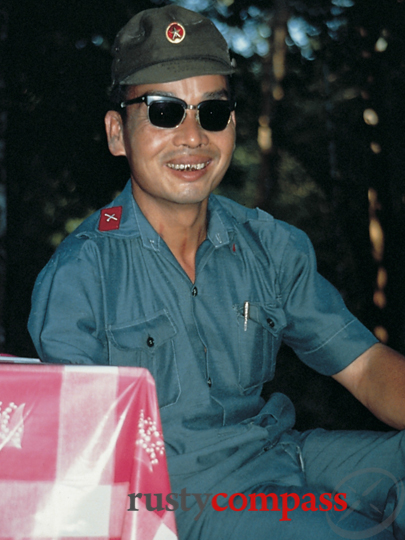
Photo: Mark BowyerFormer VC guide at Cu Chi, 1993
From there it was a long coastal drive on Highway 1 to Nha Trang. Dalat was considered too far out of the way during our first year of operations. It didn't make it into our itineraries until the following year.
This is the first of several pieces that will mark 20 years in Vietnam and the founding of Travel Indochina.
Note:
I left Travel Indochina in 2006 and have had no involvement with the company since that time. It is now owned by a large international travel corporation.





There are no comments yet.